
Guinness
From Framestore's first Guinness collaboration - the award-winning 'Surfer', directed by Jonathan Glazer, hailed as the greatest tv ad ever - to an Arthur Guinness Day celebration in 'Paint the Town Black', we are proud to present the Framestore Guinness archives.
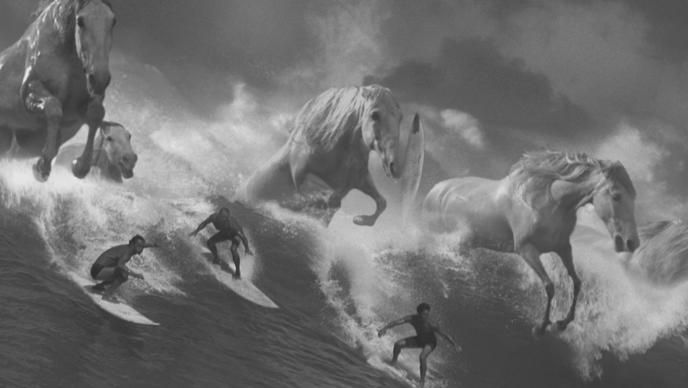
'Surfer', 1999
For several long seconds the camera lingers on a man's face. He is waiting. At last, we cut to handheld footage following the man and his three companions, all carrying surfboards. They hurl themselves into a heaving ocean. The ultimate wave has arrived. It starts to roll and we see that the men are not alone. The spirit of the wave is physically embodied in enormous white horses, which are charging through the water with them. Above, below and inside the wave, men and horses surge thrillingly forward.
This astonishing visual effect was created for the Guinness television commercial, 'Surfer', which first aired in the UK on 17th March 1999.
Acclaimed director Jonathan Glazer had collaborated with Framestore before, including on his controversial music video for U.N.K.L.E., 'Rabbit in Your Headlights'. 'It was the painterly quality that Framestore's designers brought to one of the U.N.K.L.E. shots that gave me the confidence I needed that they could handle this work', recalls Glazer. 'I wanted something that was mythological and yet utterly real. Working with such contrasting elements, one liquid, one muscular and solid, they produced some of the most extraordinary compositing work I've seen.'
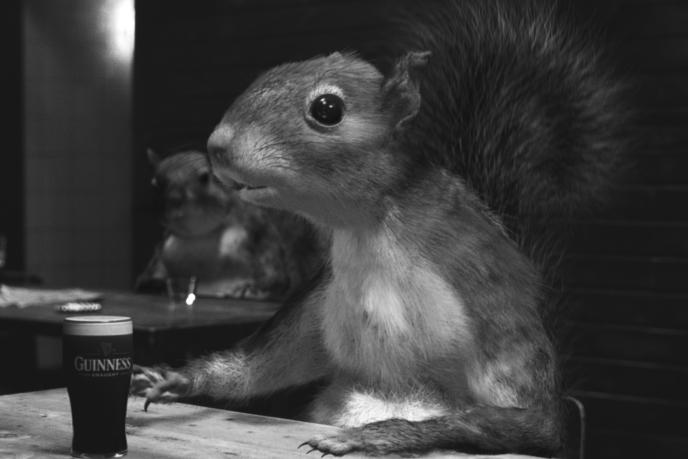
'Dreamer', 2001
'Dreamer' aired for the first time in April 2001, another collaboration between Framestore, director Jonathan Glazer and agency AMV BBDO. The previous such joining of forces produced 'Surfer', in 1999, which went on to win numerous awards as well as being voted the nation's favourite TV commercial ever.
Once more, Framestore came up with something a little bit special to help Guinness get their message across - and once more it involved some extraordinary animals. No less ambitious than the 'Surfer' horses, 'Dreamer' features the debut of some notable new virtual actors in the form of a bar full of Guinness-quaffing squirrels. But, whereas the horses were largely real creatures skillfully blended into live footage, the squirrels were entirely the product of Framestore's 3D animation team.
Leading the project team was Framestore's Head of Creature Animation, Sally Goldberg. 'From the outset Jonathan [Glazer] wanted the squirrels to be realistic actors working within the (albeit dreamlike) action of the whole piece', she recalls, 'They were not meant to be "cartoon" creatures.' To that end an ambitious and intensive programme of Research and Development commenced. This included intensive scrutiny of the furry rodents, up to and including the introduction of three live specimens to the Framestore boardroom. Goldberg additionally brought to bear a number of years' experience in the animation of a variety of animal and human elements.
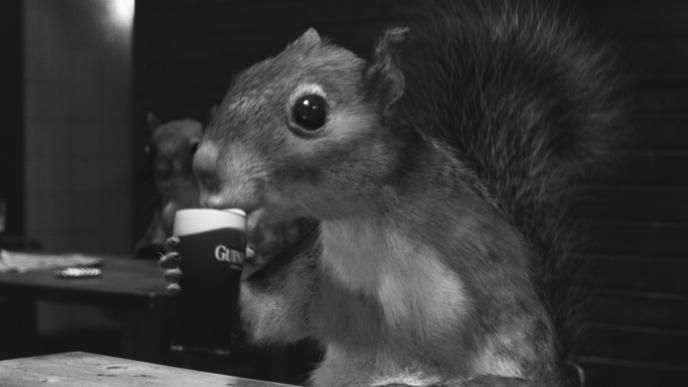
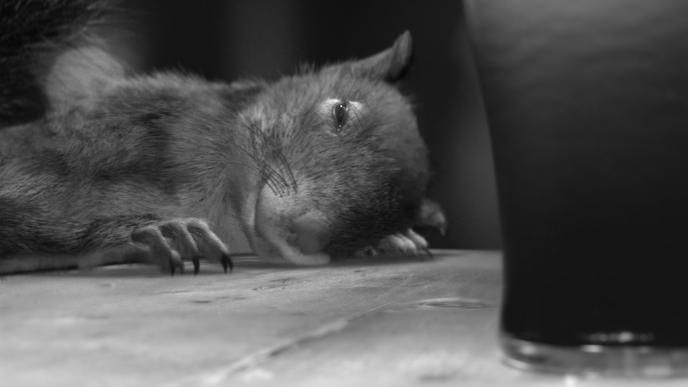
Three major considerations in designing and animating such creatures are their fur, the lighting, and the interaction between these two elements. Chiefly responsible for the development of this area was Oliver James. 'I quickly realised that the existing solutions did not have the flexibility we needed', he says. James embarked on a process of 'heavy modification' applied to Maya's fur plug-in along with Pixar's 'Mtor' fur. James developed what is essentially an entirely new set of software tools for the creation and lighting of fur. The results are that the squirrels sport an astonishingly realistic fur coat, with a level of subtlety, shading and detail rarely, if ever, achieved before in commercial work.
But if the squirrels are the major element in Framestore's work on 'Dreamer', they are far from being the only one. Framestore's artists and operators from across the board contributed their skills, and freelance Inferno Artist Steve McGee helped bring it all together. As Fiona Chilton, Effects Producer at Framestore, put it, 'By the end of the project we will have scanned, conformed and graded the whole piece, recording the final commercial back to film. In addition, we composited the shots of the horse and the dogs, removed rigs and did the crowd replication near the end of the spot. Not bad for 16 weeks work.'
'noitulovE', 2005
500,000,000 Years In 30 seconds flat!
'I know that William Bartlett and Framestore will rise to any challenge I throw at them. With noitulovE they have - once again - surpassed themselves.' Daniel Kleinman, Director, noitulovE
VFX Supervisor William Bartlett was responsible for leading Framestore's team through 'noitulovE''s demanding 3.5 month schedule, from planning, through the shoots in Iceland and in a London studio, and to the assemblage and creation of a multitude of elements in the Inferno. He even managed to bake some bread along the way
This spot was exceptional - and challenging - in many ways', admits Bartlett. 'Not least because so little of it existed when we were planning it. It is very much a product of the post production process'. Real elements that were filmable included the bar sequence at the beginning when we meet our heroes, green screen footage of the men with various costumes and layers of ape-man make-up on, some spectacular scenery from Iceland, and the mudskippers at the end of the story.
The rest of 'noitulovE' is an extraordinary digital collage, made up of stock footage, custom built CG creatures, CG plant life and rocks, digital stills and VFX from the Inferno's library of tricks.
A great VFX Supervisor is equal parts artist, technician and accountant, and it was the number-cruncher in Bartlett that led him to create some of the elements for noitulovE in his own oven. 'From the start I'd been very aware that the CG list was already colossal - 15 new creatures, for a start. For several of the shots we needed "geological" distortion of background rock formations', he recalls, 'And I was struck by the way heat affects dough. I made some up at home, experimenting with various materials to get the right sort of looks and textures, and shooting it with time lapse every 10 seconds. For some of the looks I found that a dough/Grape Nuts/Special K combo worked best!'
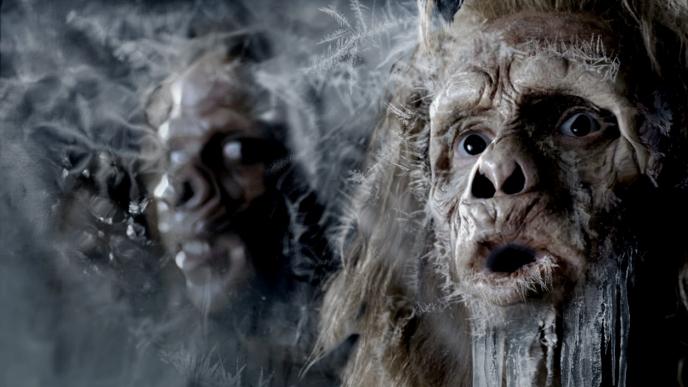
Andy Boyd headed the 3D team tasked with creating not only creatures, but also trees, grasslands, rivers, waterfalls, a meteorite and millions of years' worth of geological transition.
For the VFX elements - plant life and geology - a key to the success of producing so many 3D effects in such a little time was to have a system that allowed to create many variants of the effects procedurally. For this reason Boyd chose to use Houdini 3D software, which is ideal for this sort of approach.
The creatures that Boyd's team came up with were also in a constant state of flux - flying squirrels becoming regular squirrels, fins withering away, necks growing. 'It was a lot of fun, actually', he confesses. 'We had a bit of freedom to experiment with the design of the prehistoric creatures.'
Even with so much of the spot created inside various computers, there was still a need for a small amount of TK work. The 35mm was transferred at HD by Colourist Matthew Turner, who also worked with Kleinman on the mastergrading of the material.
So how does it feel to have squeezed an aeon into an ad break? 'Fantastic', laughs Bartlett. 'All I need now is a new Le Creuset pan to replace the one I shattered while boiling sugar for some eroding rocks.'
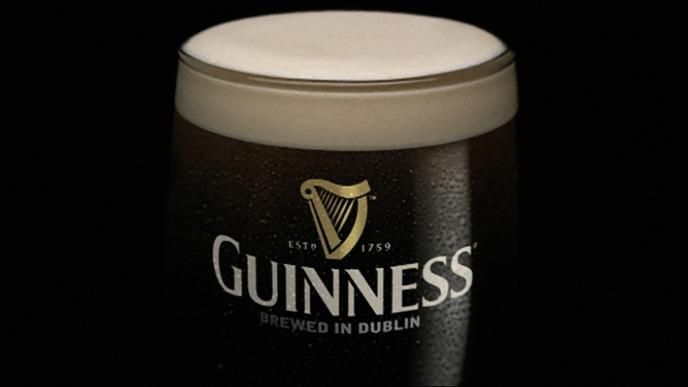
'Reactions', 2011
Framestore teamed up with BBDO NY and Howard Greenhalgh to create some spine-tingling effects for Guinness's latest offering, Black Lager. The 15 second spot visually recreates the intense sensory sensations that drinking the new beverage provokes.
'Howard is a long time friend of Framestore and it was great to team up with him again on this spot', said EP James Razzall. 'He is always pushing the boundaries of what can be achieved with lighting and lensing, but we were able to help push some of the in-camera effects that much further.' In Flame Tom Leckie augmented and animated the appearance of goosebumps, and helped widen an iris to suitably extreme proportions.
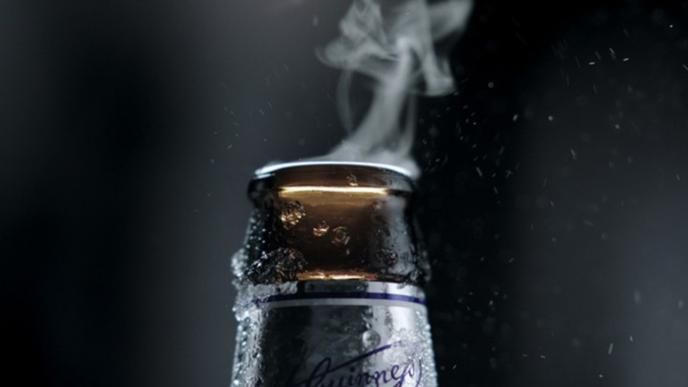
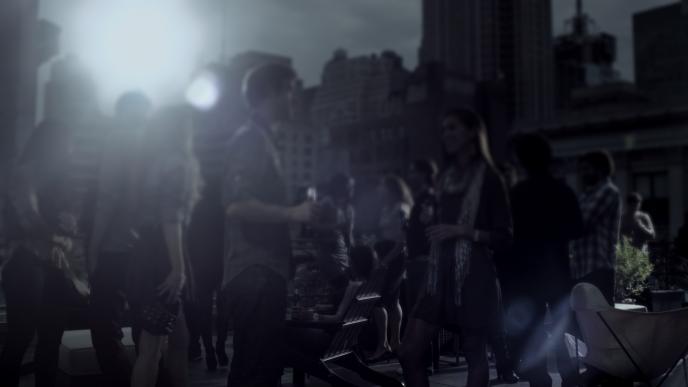
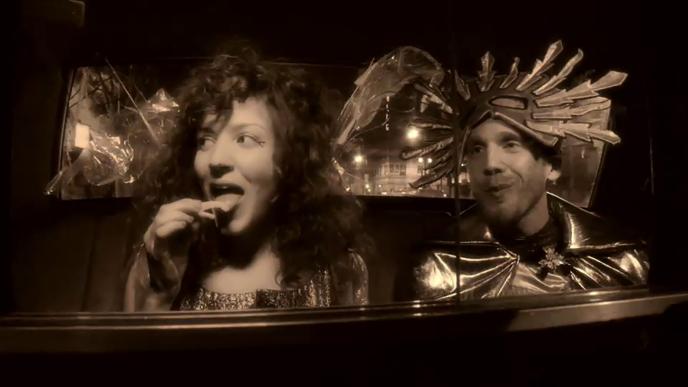
'Cab People', 2008
In 'Cab People', Framestore created a snapshot of journeys home after a night out. Radish filmed beautiful shots of the different characters in the back of the cab; Framestore's New York team then created a mosaic treatment that would form the iconic Guinness pint glass for the ending. A second unit shot additional city and cab footage on HD camera, which was combined with the hero plates to resemble the 'surge' as the black stuff settles.
Explains Lead Flame Artist, Mindy Dubin, 'Sheer volume of footage aside (there were literally hundreds of layers), what made this spot challenging and exciting was building the mosaic piece by piece without any standardized plug-and-play sparks. This is what ensured its integrity and its artful hand-crafted nature. The fun part came in figuring out exactly which pieces of footage would make the most interesting foam settling, and how best to illustrate the richness and depth of what you see when you stare longingly at pint of Guinness.'

'Paint the Town Black', 2012
Directed by Daniel Wolfe of Somesuch & Co, Saatchi & Saatchi’s worldwide Guinness campaign saw a town literally painted, not red, but black. Framestore was initially asked to help enhance some in-camera painted houses and any of the houses that were difficult to paint for real, but in the end replaced entire buildings, made the town square smaller, removed trees and replicated crowds.
The surreal shoot took place in a remote Romanian village with over 300 extras daubing everything from the buildings to the fountain with black paint in honour of Arthur Guinness Day on 27 September. The piece was graded by Simon Bourne, making the spot the latest in a long line of collaborations between the Framestore Colourist and Daniel Wolfe that includes San Miguel 'Una Vida Bien Vivida'. The spot was post-produced by Andrew McLintock, with Tim Osborne leading on Flame.
'Daniel had some amazing footage shot on location in Romania by Andre Chemetoff. Shot on 35mm film with anamorphic lenses, it shows that, although film is a fading format of choice, nothing can replace the beautiful images film can capture', said Simon.
'This commercial was truly a challenge to grade, and at times difficult due to having to show dawn, day, dusk and night whilst maintaining and enhancing the soft colour palette and natural light. The excellent street casting and natural rustic environment captured on film made it a real pleasure, enabling me to bring out textures and tones setting a mood for a very uplifting commercial.'
The commercial came third in Televisual's Top Five Best Graded Productions list in the magazine's 2013 survey of colourists, producers and award judges.



